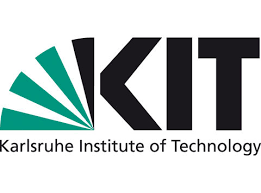Karlsruher Institute for Technology: Renewable energies: On the way to large-scale thermal storage
With high-temperature technologies, electrothermal network storage systems are possible, with which large amounts of energy from renewable sources can be buffered. In the joint project LIMELISA, the Karlsruhe Institute of Technology (KIT) and the German Aerospace Center (DLR) are developing the necessary fundamentals together with the industrial partner KSB. The Federal Ministry for Economic Affairs and Energy is funding research with 3.8 million euros.
In Germany, wind farms and solar systems generate thousands of gigawatt hours of electricity every year, which cannot be used at the moment it is generated and is limited. At other times, missing capacities are replaced with energy from fossil sources. Part of the solution could be large electrothermal storage systems that contribute to grid stability. The basic idea is to convert electricity into heat, to buffer this heat in comparatively inexpensive storage systems and to convert it back into electricity if necessary. “By using media such as molten salt and liquid metals as storage and heat transport media, very high temperatures can be reached,” says Professor Thomas Wetzel, who conducts research at the Institute for Thermal Energy Technology and Safety (ITES) and at the Institute for Thermal Process Engineering at KIT. “This opens up new fields of application for thermal storage in industry and creates ecologically and economically sustainable options for the climate-friendly conversion of the energy supply.”
Heat storage systems on an industrial scale are already in use today: In concentrating solar thermal systems, heat is stored in molten salt and converted into electricity in steam power plants. In the joint project LIMELISA (stands for: Liquid Metal and Liquid Salt Heat Storage System), the KIT scientists are now supporting the development of next-generation thermal storage systems that are specially designed for the electricity-heat-electricity process. You will concentrate on liquid metal technologies, while the DLR works with molten salts. The research is coordinated and supplemented by the industrial partner KSB, an international manufacturer of pumps and valves, which has gained experience with liquid metal circuits since the 1960s.
Preliminary test for electrothermal storage: A storage with bulk material and liquid metal as heat transfer fluid (Photo: Franziska Müller-Trefzer, KIT)
Preliminary test for electrothermal storage: A storage with
bulk material and liquid metal as heat transfer fluid (Photo: Franziska Müller-Trefzer, KIT)
Materials and components for highly efficient energy storage
Conventional electrothermal storage systems work on the basis of nitrate salt, for example. Due to the materials and components used, such as pumps and valves, among other things, they can so far only be operated at temperatures of up to a maximum of 560 degrees Celsius. “Significantly higher temperatures are necessary for reconverting electricity with conventional steam power plants,” says project manager Dr. Klarissa Niedermeier from ITES. “At KIT, we will test key components in a lead circuit with a temperature of up to 700 degrees.” The direct contact with the liquid metal makes special materials necessary, which are also developed and tested at KIT. At the Institute for High Power Pulse and Microwave Technology, Dr. Alfons Weisenburger on these special steel mixtures. “Conventional methods for corrosion protection are no longer sufficient at such temperatures,” he explains. “Among other things, we use aluminum oxide as a kind of protective shield to protect pumps and fittings.”
Versatile application possibilities also in industry
A great advantage of thermal storage solutions are their versatile application possibilities, also in the service of sector coupling. In addition to the electricity-heat-electricity process pursued in the LIMELISA project, the technologies developed can also be used to supply heating networks with renewable electricity. In industry, on the other hand, they can efficiently deliver high-temperature process heat, as required in the chemical and building materials industry or in metal processing. “Currently, this high-temperature heat requirement is mainly covered with fossil fuels,” says Dr. Walter Tromm, the head of ITES.

